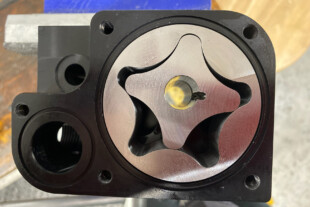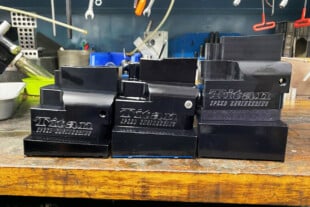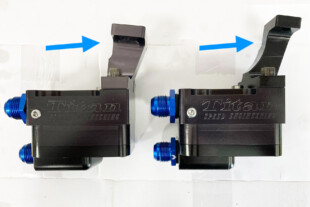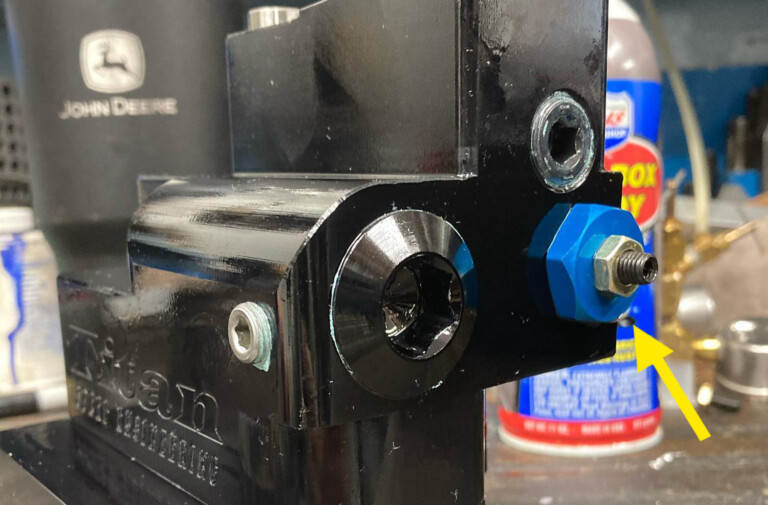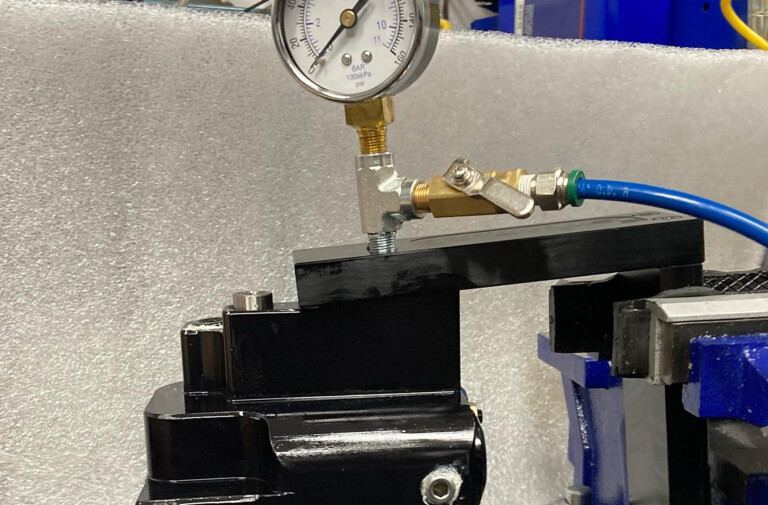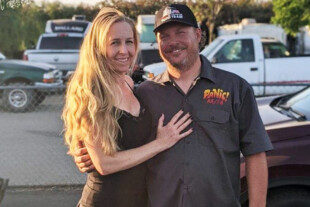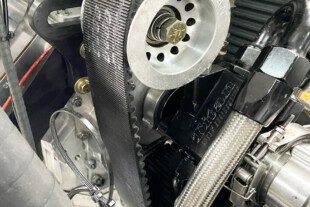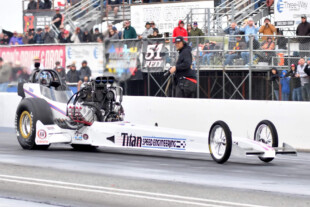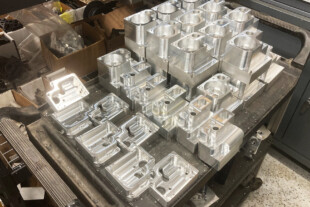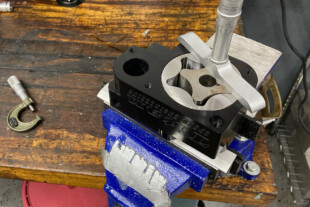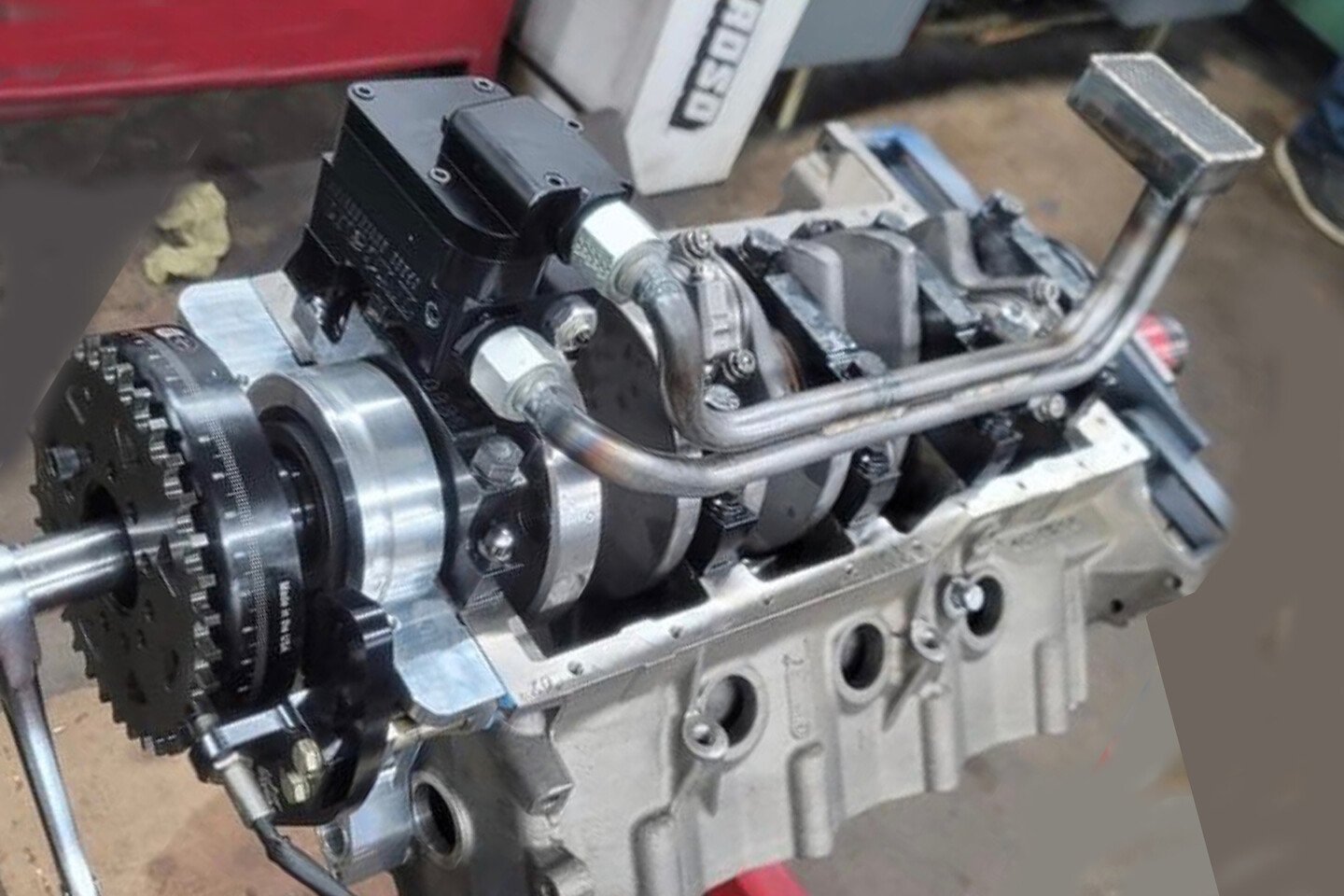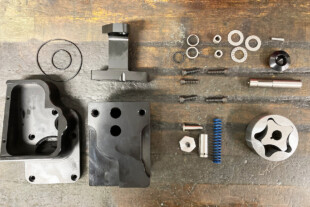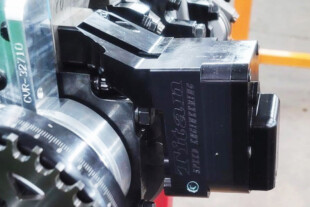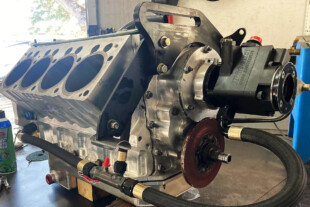The precision machined gerotor is set in the pump housing. There typically is no sump pickup, as the gerotor is submerged at the pump’s lowest depth. Different lengths in the upper section of the modular housing (arrows, at right) are factored into your oil pan depth.
When engine and pump RPM are below the maximum regulated pressure, the volume rating of an oil pump can assist the oil flow through the engine until peak regulated pressure is achieved.
Feeding Oil In The Best Way Possible
The new owners of Titan Speed Engineering are a prime example of a racer’s desire to protect against extreme bearing pressures with their own car, a nostalgia Top Fuel dragster.
“With more boost comes more detonation, which is definitely the case with a blown nitro powerplant. It is an entirely different beast. We want up to 150 psi or greater oil pressure. I’m currently at 150 psi, using heavy 70-weight nitro racing oil, and hitting 9,800 rpm. This is a worst-case scenario for cavitation. And I’m doing this with my own Titan pump I have had for quite some time,” Van Horn says.
A large adjuster on the side of the pump (arrow) can set your pressure regulator ranging typically from 70 to 200 psi. You can have Titan adjust your pressure settings in such instances as possibly a change in your bearing tolerances, or you can purchase a fixture to set your own pressures.
Most Titan Pro pumps have a large, integral pickup with over 13 square inches of screen area. A uniquely adjustable pressure regulator allows you to select virtually any pressure setting, from 50 to more than 200 psi.
Dual Feed to the Gerotor Pump
Yes, the gerotor oil pump can also experience some dwell, but to a much lesser degree. Still, Van Horn explains a revolution in the Titan gerotor pump design that further diminishes cavitation. “With two oil inlets instead of one, the gerotor can draw much more oil over the dwell span of each gerotor tooth. This additional oil alleviates cavitation when pressurized.”
The Van Horns compete with a nostalgia Top Fueler and have been a faithful customer of Titan Speed for years. With the noticeable void among racers for their gerotor oil pumps, they wanted the name and designs to continue their past success.
Pump Depth
Another point with a Titan pump is the location of the gerotor area within their wet sump oil pumps. Instead of a pickup tube, Titan’s billet aluminum housing is configured with the gerotor area submerged in the oil, close to the bottom of the oil pan.
“The gerotor is submerged to the lowest point in the pump, which keeps the gerotor pumping mechanism always under your oil level,” Van Horn explains. “Once the pressurized oil leaves the gerotor, it travels upward under pressure through the pump body. We have different heights of pump cases that match the depth of various pans.”
Van Horn insists that all materials used to machine their pump components are still American-made. He adds, “The aircraft-quality billet aluminum, hard anodizing, and various steels used are still sourced by suppliers that successfully worked with the original Titan Speed.”
Van Horn points out another advantage of the submerged pump design. “For any extreme doorslammers, dragsters, to even my own nostalgia fuel car, the issue of tire-shake can crack or knock a standard oil pump sump-pickup out of the pump. A Titan pump has no delicate pickup to fail.”
Van Horn notes, “I can’t stress enough the hard anodizing process you see on our black pumps; it serves a far greater wearability benefit than just anodizing aluminum for visual looks.”
This unique racing engine block uses a remote sump rather than a submerged gerotor pump. The dual-feed inlet lines feed into the gerotor cavity from above and below. Providing oil to the gerotor from two points instead of one helps diminish any cavitation within the pump.
Technically, even though the new Titan has retained their previous owner’s proven designs, they have slightly improved its end products with new machine shop equipment and the latest Mastercam CNC software. “The previous company exceeded industry standards for machining,” says Van Horn. “We have taken this quality a small step higher.”
Rebuildable Engineering
Van Horn speaks of the rebuildable design that has always been a part of the Titan pump lineage.
“We do have customers that have purchased multiple engines over time, but they have always kept their Titan pump; they take it with them for the next build.”
Titan Speed Engineering designs all of its pumps with the ability to be rebuilt to the proper tolerances over time. Like many other major engine components, savvy racers will return their pumps to Titan for periodical rebuilding.
The Titan pump has a modular design that allows a combination of housing pieces to create different pump fitments. Many Titan pumps are submerged wet sump units, but they create many unique gerotor applications, like external pumps for Chrysler Hemi aftermarket blocks.
The Investment Factor
Some high-horsepower components are replaced over time and wear; others can be carefully used, maintained, and rebuilt indefinitely for a “good as new” result. Considering this hardware that pressurizes your critical oil supply, a rebuildable gerotor pump can be viewed as a long-term investment.
The spur gear pump serves your factory sedan or mild-performance vehicle well. When you raise the bar with rising engine RPM, bearing pressures, and more, forcing engine oil where it absolutely needs to be isn’t important, it is paramount.
By taking a time-proven oil pump design and modernizing it with a new type of pump gear, the Titan pumps reduce stresses on your oil-pump drive mechanisms and offer you much better oil delivery, which your engine will be grateful for.







